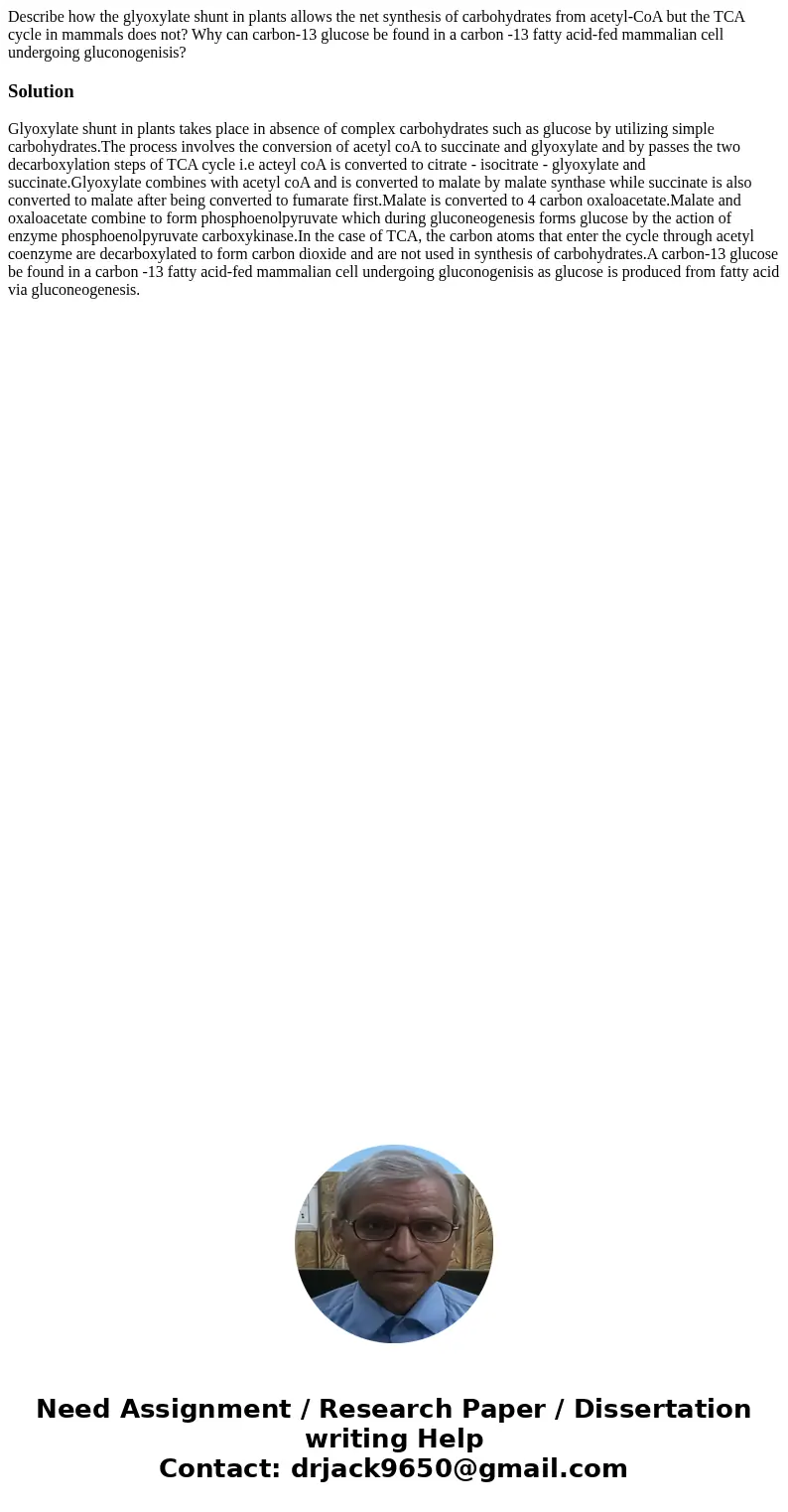Describe how the glyoxylate shunt in plants allows the net s
Describe how the glyoxylate shunt in plants allows the net synthesis of carbohydrates from acetyl-CoA but the TCA cycle in mammals does not? Why can carbon-13 glucose be found in a carbon -13 fatty acid-fed mammalian cell undergoing gluconogenisis?
Solution
Glyoxylate shunt in plants takes place in absence of complex carbohydrates such as glucose by utilizing simple carbohydrates.The process involves the conversion of acetyl coA to succinate and glyoxylate and by passes the two decarboxylation steps of TCA cycle i.e acteyl coA is converted to citrate - isocitrate - glyoxylate and succinate.Glyoxylate combines with acetyl coA and is converted to malate by malate synthase while succinate is also converted to malate after being converted to fumarate first.Malate is converted to 4 carbon oxaloacetate.Malate and oxaloacetate combine to form phosphoenolpyruvate which during gluconeogenesis forms glucose by the action of enzyme phosphoenolpyruvate carboxykinase.In the case of TCA, the carbon atoms that enter the cycle through acetyl coenzyme are decarboxylated to form carbon dioxide and are not used in synthesis of carbohydrates.A carbon-13 glucose be found in a carbon -13 fatty acid-fed mammalian cell undergoing gluconogenisis as glucose is produced from fatty acid via gluconeogenesis.

 Homework Sourse
Homework Sourse